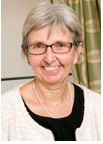Digital dying! What is this about?
A blog post written by Dr Jennifer Tieman, CareSearch Director, Associate Professor, Discipline Palliative and Supportive Services
I’ve always been interested in how technology is evolving and how it is affecting our personal and our working worlds. Technology has changed and is continuing to change how we access information, how we communicate, what we create and what we leave behind. So preparing a module on digital dying for our MOOC, Dying2Learn, gave me a wonderful opportunity to explore a number of different aspects of death and dying that have been influenced or changed by digital technologies.
Some things are immediately obvious. Digital technologies have changed much of health and there are now amazing avenues for assessment, treatment and research that were not available a generation ago. If you are interested in the big picture approach to digital health, I’d suggest you take a look at Ste Davies’ presentation 10 digital health trends for the next 20 years or check out The Medical Futurist, who likes to pose grand challenges for the digital world and transforming health.
This revolution can seem a long way from the very human process of dying. However, many of these drivers are also influencing death and dying. We know social media is promoting new discussions about death and dying which is seen in websites or webpages like The Groundswell Project or Future of death.
We know that people who have health problems turn to the web for information and resources. So if I learn that I have a terminal illness and I know how to search I can find out about my diagnosis and treatment options and the likely outcome of treatment. I can find out what others have been through. I can seek cures and other treatments. I can even find my local palliative care service. But I can be more than a recipient of information I can be a participant. I can share what is happening to me with my friends and family on social media. I can seek to manage my affairs by making use of apps and online resources. (They can help me track my pain, organise support and care or manage my medicines.) I can leave messages for my family or friends to view once I have died. I can even choose to blog or tweet about by dying. All of these are digital choices that people are making.
Even after death, digital issues can continue. You need to have thought about your digital legacy. What do you want to leave behind? And what do you want to happen to the digital footprint you leave behind. As an example, one estimate suggests that there are over 194 million Facebook users and that in 2016 around 900,000 of these users will die. So what happens to all these accounts? The last few years have seen some quite important with many platforms establishing arrangements for death of account holders and encouraging account holders to have arrangements in place. A team of researchers actually investigated some of these issues in 2012. They looked at licensing policies, terms of use agreements and copyright law, and interviewed a range of people, including funeral directors, religious workers, internet content and service providers, as well as estate planning lawyers. They produced a report, Death and the Internet and a website to assist in managing your digital heritage, www.digitalheritage.net.au/.
So digital dying is a complex, interesting and illuminating and I am looking forward to the conversations about it in the MOOC!

Dr Jennifer Tieman, CareSearch Director, Associate Professor, Discipline Palliative and Supportive Services